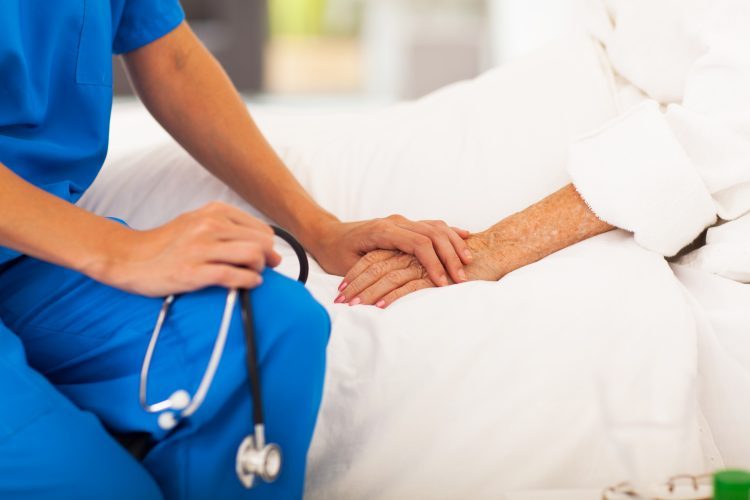The family of Chronic pain and what we have learnt
My Dad is plagued by pain and has been my entire life. As a child I tried to find meaning in what I thought, was a series of unrelated, convoluted and unfortunate events that eventuated in my Dad’s chronic pain, sadness and anger. Then I got sick (a large ganglioneuroma attached to my left sciatic nerve) and it was my turn to experience chronic neuropathic pain and a series of medical events. My childhood experiences of living with my Dad and his pain, my pain and the hardships that resulted because of it, stayed with me and lingering feeling became apparent at a young age that we can’t be the only ones.
Over the past 4 years, as part of my PhD, I have personally spoken to over 500 Australians with Chronic Non-Cancer Pain (CNCP) and I was right we weren’t the only ones. And although, the all-encompassing experience of CNCP is the norm and logical to me, both the medicine field and the general public don’t often think pain as the primary focus of a medical problem or a disorder within itself. Better yet, people often don’t realise the comorbidity associated with CNCP and the shortcomings of the Australian medical system in treating it.
So here are some of the facts:
CNCP or constant or recurrent pain for 3 months or longer(1), effects 1 in 5 people in Australia (2) and comes in all shapes and forms. It includes pain caused by diseases such as herpes zoster, complex conditions with no known cause such as complex regional pain syndrome, accidents and surgery (1). But CNCP, rarely occurs in isolation. People with CNCP are 1.4-5 times more likely to have additional chronic physical health problems such as hypertension, stroke and diabetes (3, 4) and are twice as likely to have a mental health disorder (5, 6). These complex health issues result in people who usually unable to work or putting strain not only on the individual but the whole family (2, 7).
Multidisciplinary pain clinics that offer and incorporate medication, invasive procedures, physical rehabilitation and psychological services are the gold standard approach to treatment but the fact of the matter is that the majority of people with are unable to access these services(8). This means that GPs are left to treat the majority of people with CNCP, who have little to no money for specialised and allied health services. On top of this medications used in the treatments of pain are unlikely to adequately relieve pain and improve functioning (9). This not so pretty picture echoes the experience of my family and I have heard off numerous GPs of the struggles they face trying to treat people with CNCP.
So what can we do?
Well I don’t pretend to have all the answers but Australia was the first country to have a national strategy for pain management (http://www.painaustralia.org.au/), which means there are people actively trying to change accessibility problems on a large scale.
But what can individuals do right now?…
Believe your patients– people with CNCP often say that numerous health professionals friends and family have told them ‘that it is all in their head’, including my Dad. This damage, along with the approach to treatment being trial and error much of the time, they lose faith in the medical system and their support systems. So explicitly state that you do believe them, and repeat!
Educate yourself- Most health professionals receive little training in the management of CNCP and it is an area where knowledge on the mechanisms of pain has changed dramatically and is growing exponentially.
I realise that this is easier said than done but there are many websites that you have peer review journals to get you started and I would recommend subscribing to their newsletters and Facebook pages so they remind you to keep building your knowledge when you see something that interests you. I did this for my PhD. These include:
- Pain Australia (http://www.painaustralia.org.au)
- Chronic pain Australia (http://chronicpainaustralia.org.au/index.php)
- Australian Pain Management Association (https://www.painmanagement.org.au/)
- Australian Pain Society (http://www.apsoc.org.au/)
- Neuro Orthopedic Institute or NOI group (http://www.noigroup.com/en/Home)
- Hunter Integrated Pain Services (HIPS) (http://www.hnehealth.nsw.gov.au/Pain/Pages/Pain.aspx)
Educate and empower your patients- Educating yourself also has to translate into explaining knowledge to patients. The mechanisms of CNCP are complex and the need for less reliance on medication based treatments and more allied health approaches, is a hard sell for health professionals, as it has been with my Dad. So it is important that you keep a really open dialogue about understanding pain and implementing sustainable, whole body approaches to treatment and reiterating that they are scientifically based. Most of the websites above have patient resources available but there are some really well done books and videos that can help in explaining pain and potentially help patients.
- NOI group (http://www.noigroup.com/en/Home) have an amazing book called “Explain pain” that explains neuroplascity at a patient level but they also have books for health professionals. They also have done research on new types of treatments so check them out as well.
- HIPS (http://www.hnehealth.nsw.gov.au/Pain/Pages/Pain.aspx) has a series of animated videos on pain, opioid and active treatment plans as well as other resources on treatment
- Physiocise (http://www.physiocise.com.au/about) is a Sydney based physiotherapy group but they have books and videos available.
The end of the story is that my Dad still has CNCP and struggles to cope and I have tried my best to not only to helping him but contributing to knowledge in this field and will continue to do so.
REFERENCES
- Treede R-D, Rief W, Barke A, Aziz Q, Bennett MI, Benoliel R, et al. A classification of chronic pain for ICD-11. Pain. 2015;156(6):1003-7.
- Blyth FM, March LM, Brnabic AJ, Jorm LR, Williamson M, Cousins MJ. Chronic pain in Australia: a prevalence study. Pain. 2001;89(2-3):127-34.
- Dominick CH, Blyth FM, Nicholas MK. Unpacking the burden: understanding the relationships between chronic pain and comorbidity in the general population. Pain. 2012;153(2):293-304.
- Ohayon MM, Stingl JC. Prevalence and comorbidity of chronic pain in the German general population. Journal of Psychiatric Research. 2012;46(4):444-50.
- Von Korff M, Crane P, Lane M, Miglioretti DL, Simon G, Saunders K, et al. Chronic spinal pain and physical–mental comorbidity in the United States: results from the national comorbidity survey replication. Pain. 2005;113(3):331-9.
- Gore M, Sadosky A, Stacey BR, Tai KS, Leslie D. The burden of chronic low back pain: clinical comorbidities, treatment patterns, and health care costs in usual care settings. Spine. 2012;37(11):E668-77.
- Patel AS, Farquharson R, Carroll D, Moore A, Phillips CJ, Taylor RS, et al. The impact and burden of chronic pain in the workplace: a qualitative systematic review. Pain Pract. 2012;12(7):578-89.
- Kamper SJ, Apeldoorn AT, Chiarotto A, Smeets RJEM, Ostelo RWJG, Guzman J, et al. Multidisciplinary biopsychosocial rehabilitation for chronic low back pain. Cochrane Database of Systematic Reviews. 2014(9).
- Andrew Moore R. What works for whom? Determining the efficacy and harm of treatments for pain. Pain. 2013;154 Suppl 1:S77-86.






